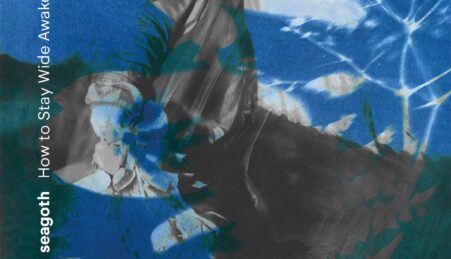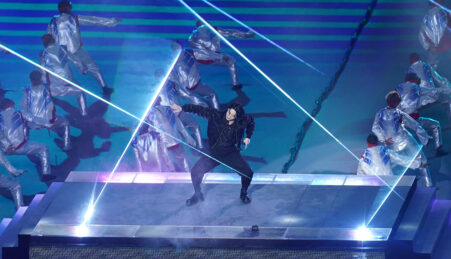By Nguyen Bui Vu
Blade Runner 2049 is the sequel to the seminal sci-fi film Blade Runner, first released in 1982. This means that it is one of the longest gaps between a film and its sequel in cinematic history. However, this time around, Denis Villeneuve is at the helm of the director’s chair with Ridley Scott (director of the first instalment) acting as executive producer.
Fresh off a hot streak directing critically acclaimed films such as Sicario and Arrival, Villeneuve gets to work with an international and varied cast, featuring Ryan Gosling, Ana de Armas, Sylvia Hoeks and Jared Leto. But the big draw of the film cast-wise is Harrison Ford’s long-awaited return to the role of Rick Deckard, who gets to play a recluse haunted by his past.
Working alongside Denis Villeneuve are Roger Deakins, the cinematographer known for his work on such films as The Shawshank Redemption, No Country for Old Men and Skyfall; Dennis Gassner, the production designer known for his work on the last three Bond films and Hans Zimmer, the legendary film composer who has long list of credits ranging from The Lion King to the Dark Knight trilogy (his frequent collaborator Benjamin Wallfisch is also credited for composing the musical score).
Blade Runner 2049 sees Ryan Gosling as K, an officer from the LAPD tasked with finding illegal replicants (bio-engineered androids) and killing them, or in this movie’s universe, ‘retiring’ them. After stumbling upon a clue that leads to a revelation that may shake the foundations of society as we know it, he is tasked with investigating further into this case which leads him to find Rick Deckard, who held the same job K has 30 years prior.
Meanwhile, Niander Wallace (played by Jared Leto), a businessman and philanthropist who is responsible for the mass production of replicants, happens to find out about this revelation and wants to use it for his own personal gain and sends Luv, a henchwoman played by Sylvia Hoeks, to do the dirty work for him. Long discussions, evidence sifting and short bursts of action ensue.
With the important context out of the way, what stood out from Blade Runner 2049? The first thing that strikes the audience is the cinematography, which is stunning, to say the least. The shot placement paired with the colour scheme is a masterclass in visual storytelling. There’s a great mix of wide shots to sell the scale of the story and close ups to capture the emotional heft of the story. Almost every frame presented in this film should be shown at an art exhibition, that’s how brilliant the cinematography is. However, at this point, we’ve come to expect such masterful work from Roger Deakins, who has 13 nominations and 0 wins for the Oscar for Best Cinematography. Fingers crossed, he will get the trophy for the first time.
Another thing that stood out from this film is the large bevy of strong performances. Ryan Gosling is great as K; he manages to stand on his own and he doesn’t attempt to fill Deckard’s shoes, while also going through the same emotional and psychological turmoil that Deckard went through in the first film. Harrison Ford does a great job at conveying a sense of trauma and emotional baggage carried over from the first Blade Runner, playing a reclusive Deckard greatly affected by his past. Jared Leto hasn’t been given a whole lot of screen time, but when he appears on screen he is excellent as Niander Wallace, playing both an enigmatic and charismatic yet opportunistic businessman. The standouts of this film are Ana de Armas as Joi, who is a compassionate and sympathetic companion to K, and Sylvia Hoeks as Luv, the psychotic henchwoman who is loyal to Wallace.
Blade Runner 2049 also has a compelling central mystery. As with the first Blade Runner, this film draws very much from traditional film noir while updating the genre to a modern, futuristic setting. It has a protagonist who is flawed and feels alienated in the world he inhabits, as well as the setting being very grimy and gritty and it has the characters expressing a very pessimistic view of the world. Moral ambiguity is also present within the film, with characters questioning their actions and committing morally dubious acts. The story is very investing with neatly done twists and turns that keep the audience guessing the next plot point. Therefore, it can be said that the story the film tells is unpredictable yet engaging. Also, it doesn’t always fall into cliché traps and genre tropes; the film maintains a sense of freshness and inventiveness within the plot.
As for flaws, some of the characters deserve more screen time. Dave Bautista’s character Sapper Morton deserves to show up more often in the film as he has only given 10 minutes of screen time. His purpose was only to provide the starting point of the plot and deliver some exposition. Jared Leto’s character Niander Wallace also deserves to show up more often in the film since I thought his character was very compelling and magnetic. Also, the pacing could have been better. For the record, I don’t think there are any scenes that should have been cut out entirely from the film, but instead have some of them shortened down by 5 – 10 seconds since they do drag on for longer than they need to be.
Overall, Blade Runner 2049 is both a worthy sequel to the original and a great film that stands on its own, despite its somewhat minor flaws. In fact, I might like the sequel more than the original since I find it to be more investing and action-packed than the first one. I highly recommend watching it as soon as possible and support large-scale, high-concept and artistically-driven filmmaking as much as you can.





Leave a reply